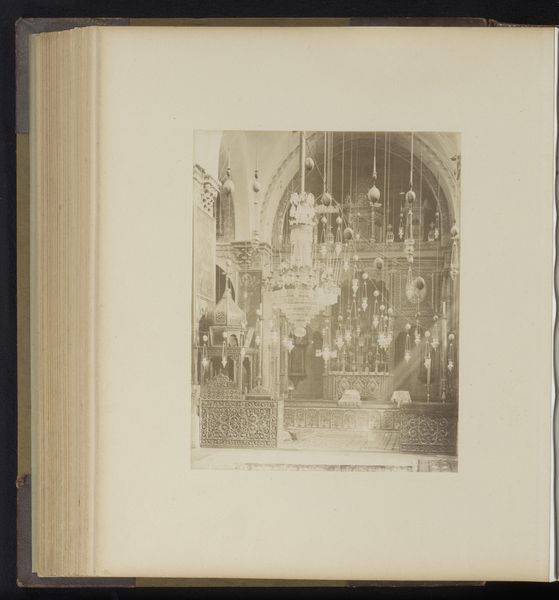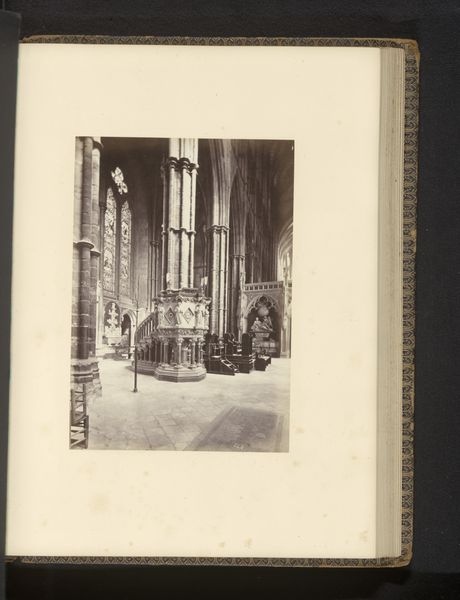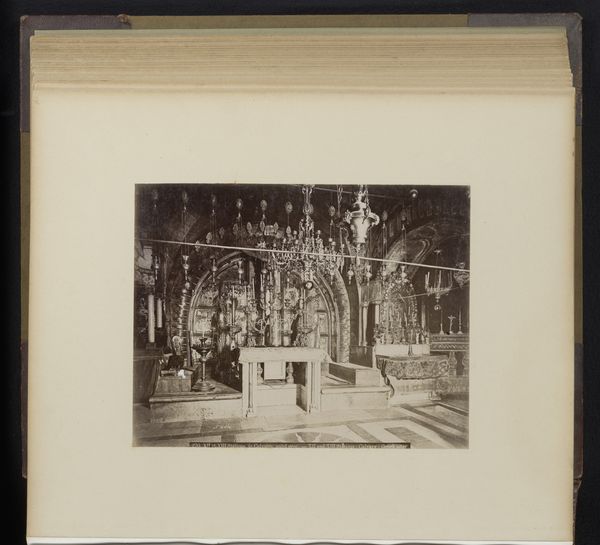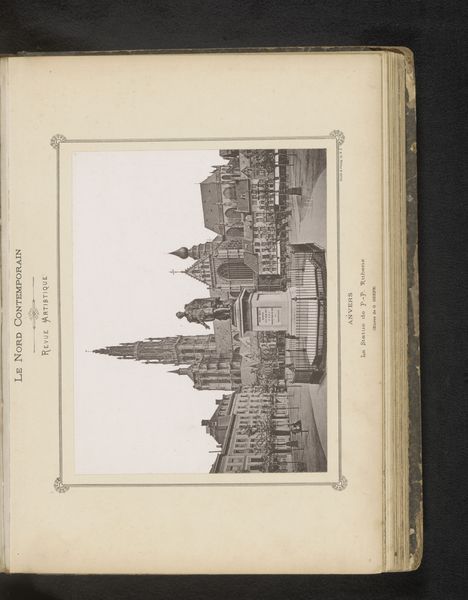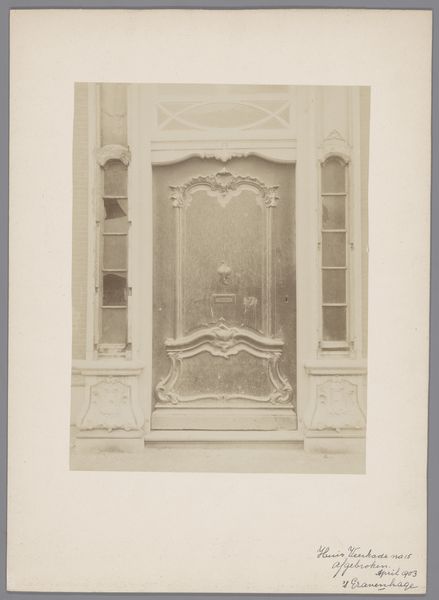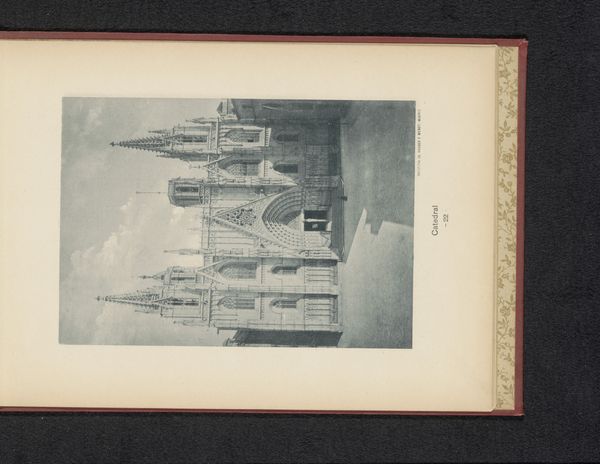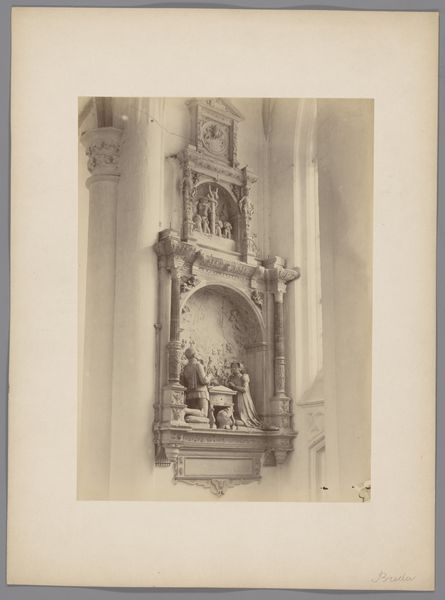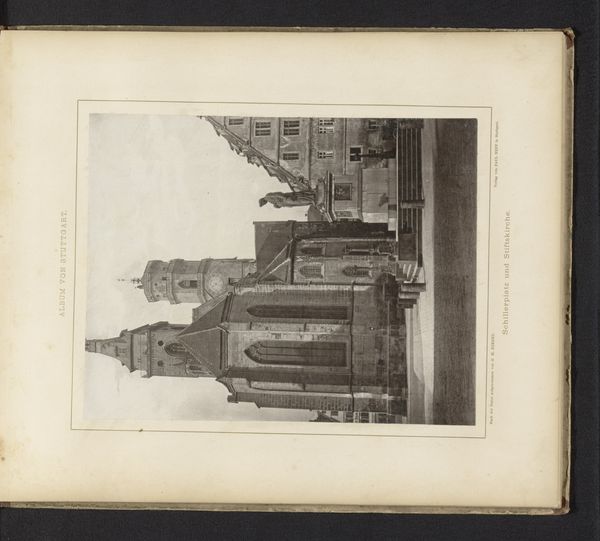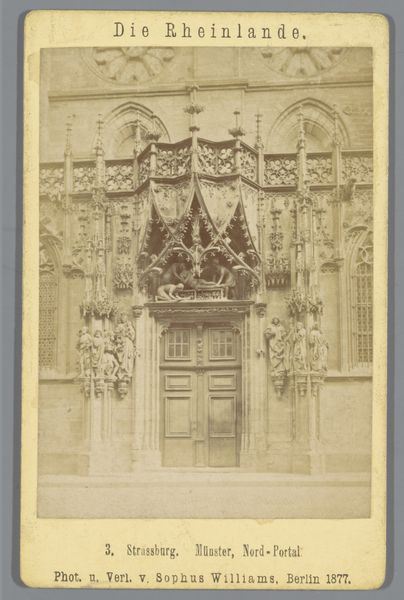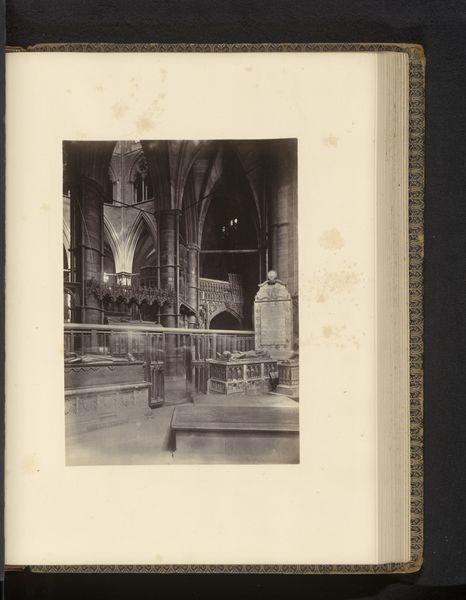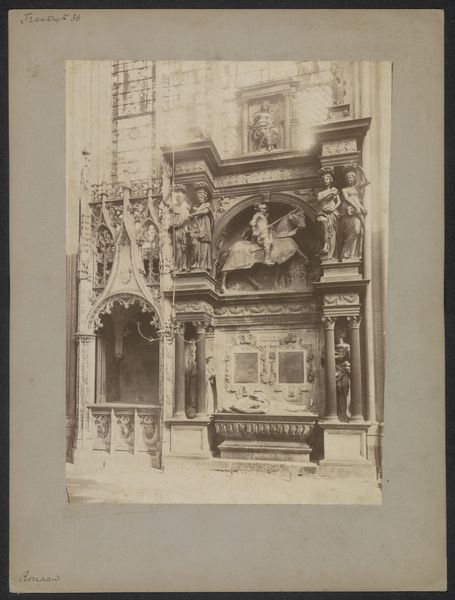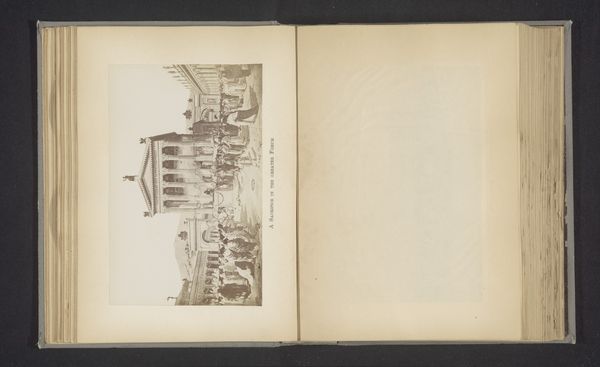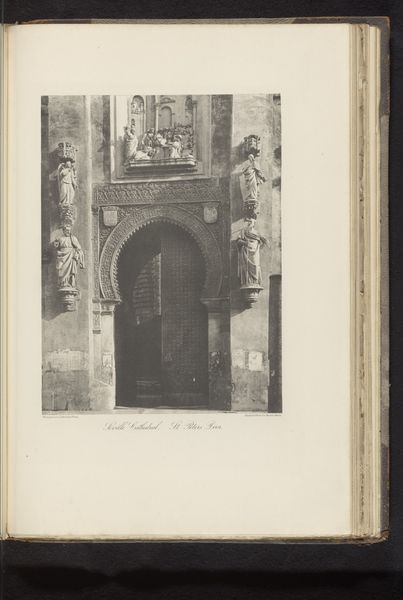
photography, albumen-print
#
photography
#
islamic-art
#
albumen-print
Dimensions: height 277 mm, width 219 mm
Copyright: Rijks Museum: Open Domain
Curator: Before us is "Interior of the Church of the Holy Sepulchre in Jerusalem," an albumen print created between 1867 and 1885 by Félix Bonfils. Editor: The architectural details here feel almost oppressively ornate. It’s dizzying, yet undeniably powerful. The tonal range in the print is quite subtle; it lends the whole image an otherworldly feel. Curator: Indeed. Bonfils, along with other photographers of his time, catered to a growing European interest in the Holy Land. These images served not just as documentation, but also as powerful symbols of colonial presence and cultural fascination. Editor: Notice how Bonfils frames the central opening; he employs symmetry that leads the eye directly to that shadowy interior, almost like a stage set. This meticulous construction adds a dramatic and sacred element to the depiction. Curator: Absolutely. The Church of the Holy Sepulchre is incredibly significant—believed by many Christians to be the site of Jesus' crucifixion and resurrection. By capturing this interior, Bonfils wasn’t simply creating art; he was also producing a kind of relic. Editor: I’m captivated by the variations in textures—the smooth surfaces contrasted with the intricate carvings. Bonfils skillfully captures this diversity using light and shadow. This approach highlights the elaborate craftsmanship. Curator: Furthermore, the sale and distribution of these photographs allowed a broad audience to experience a space most could never visit. It fueled a visual culture centered around religious and historical tourism. Editor: The photograph offers a striking glimpse into another time; it's so compelling to analyze how the photographer carefully constructed the composition, utilizing elements of light and shadow. Curator: Reflecting on it, Bonfils gave access and simultaneously participated in shaping perceptions of a sacred place through the very act of representing it. Editor: It is an invitation to view not only an edifice of faith but to contemplate the mechanics behind our perception.
Comments
No comments
Be the first to comment and join the conversation on the ultimate creative platform.
